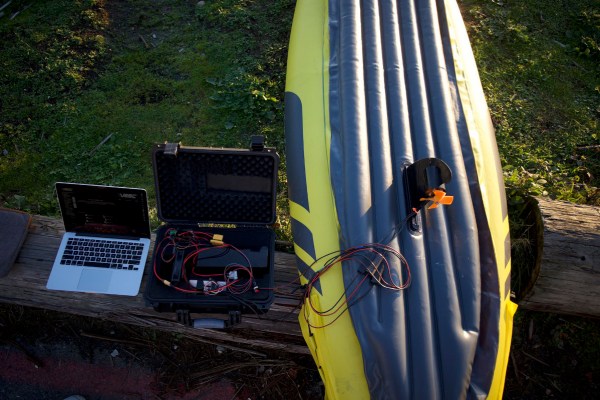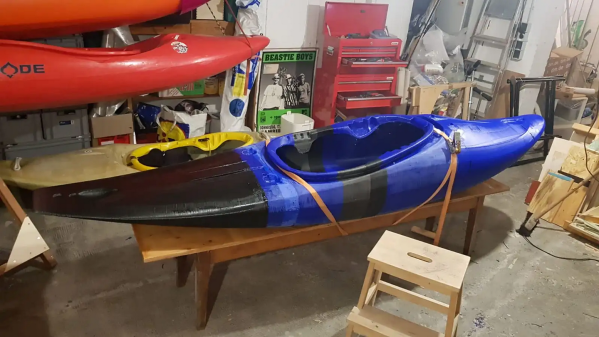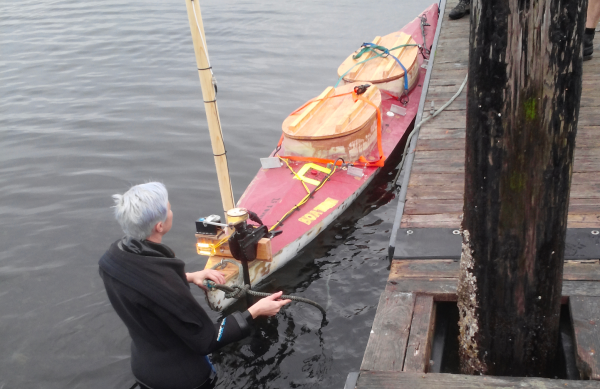If you want to get active out on the water, you could buy a new kayak, or hunt one down on Craigslist, Or, you could follow [Ivan Miranda]’s example, and print one out instead.
[Ivan] is uniquely well positioned to pursue a build like this. That’s because he has a massive 3D printer which uses a treadmill as a bed. It’s perfect for building long, thin things, and a kayak fits the bill perfectly. [Ivan] has actually printed a kayak before, but it took an excruciating 7 days to finish. This time, he wanted to go faster. He made some extruder tweaks that would allow his treadmill printer to go much faster, and improved the design to use as much of the belt width as possible. With the new setup capable of extruding over 800 grams of plastic per hour, [Ivan] then found a whole bunch of new issues thanks to the amount of heat involved. He steps through the issues one at a time until he has a setup capable of extruding an entire kayak in less than 24 hours.
This isn’t just a dive into 3D printer tech, though. It’s also about watercraft! [Ivan] finishes the print with a sander and a 3D pen to clean up some imperfections. The body is also filled with foam in key areas, and coated with epoxy to make it watertight. It’s not the easiest craft to handle, and probably isn’t what you’d choose for ocean use. It’s too narrow, and wounds [Ivan] when he tries to get in. It might be a floating and functional kayak, just barely, for a smaller individual, but [Ivan] suggests he’ll need to make changes if he were to actually use this thing properly.
Overall, it’s a project that shows you can 3D print big things quite quickly with the right printer, and that maritime engineering principles are key for producing viable watercraft. Video after the break.
Continue reading “3D-Printing A Full-Sized Kayak In Under A Day”

















